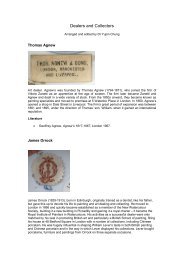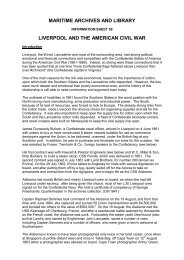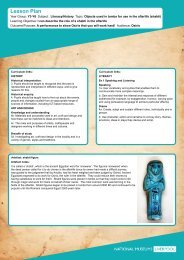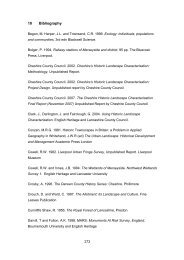Business-Business Collections no60 - National Museums Liverpool
Business-Business Collections no60 - National Museums Liverpool
Business-Business Collections no60 - National Museums Liverpool
You also want an ePaper? Increase the reach of your titles
YUMPU automatically turns print PDFs into web optimized ePapers that Google loves.
Wingrove & Rogers Ltd., Electrical Engineers, 1915-1986<br />
Founded in 1919 the company specialised in the production of electrical components. Its main<br />
client was another local firm, British Electrical Vehicles Ltd., that it eventually acquired in 1926.<br />
During the 1920s the company was known for specialising in the production of coils for<br />
electrical equipment. The main company premises were in Old Swan, <strong>Liverpool</strong>. The archive<br />
collection includes legal and financial records, photographs and operational records and<br />
correspondence.<br />
<strong>Liverpool</strong> Warehousing Co., Ltd., 1895-1983<br />
For many years the <strong>Liverpool</strong> Warehousing Company was the largest firm of warehouse<br />
keepers in the UK. Its main commodity was cotton. The firm became part of the Transport<br />
Development Group around 1986. The main offices of the <strong>Liverpool</strong> Warehousing Company<br />
were situated at 70 Pall Mall, <strong>Liverpool</strong>. The archives include minute books, legal and financial<br />
papers and also the records of sixteen of its subsidiary companies.<br />
Ayrton Saunders & Co., Ltd., 1885-1986<br />
Ayrton Saunders & Co., Ltd., started out as a manufacturing chemist in 1868 based in Hanover<br />
Street, <strong>Liverpool</strong>. These premises, together with three depots on Park Lane, <strong>Liverpool</strong>,<br />
Prenton, Birkenhead and Burslem, were sold in 1899 when the company was taken over by<br />
A.A.H. Pharmaceuticals. In 1990 the firm moved into new premises on Spindus Road, Speke<br />
Hall Industrial Estate. The firm now operates from its headquarters in Runcorn. In 1997 Mr.<br />
G.F. O’Brien of <strong>Liverpool</strong>, purchased the name and now runs the expanded business from<br />
Runcorn. The archive includes price lists, house magazines and catalogues as well as minutes<br />
and accounts.<br />
Vulcan Foundry Co., Ltd.<br />
Charles Tayleur, a <strong>Liverpool</strong> engineer, founded the Vulcan Foundry at Newton-le-Willows in<br />
1830. In 1832 Robert Stephenson, the well known railway engineer, joined him in partnership.<br />
In 1847 they took over the Bank Quay Foundry in Warrington and in 1852 built their first seagoing<br />
iron vessel, the clipper Tayleur, which was tragically wrecked off Dublin in 1854 en route<br />
to Australia. The partnership was incorporated as a private company in 1864 as the Vulcan<br />
Foundry Co., Ltd.<br />
Vulcan locomotives were exported all over the world, with the first locomotives for Russia and<br />
Japan supplied in 1837 and 1871 respectively. During World War II the factory built the<br />
“Waltzing Matilda” tank and in 1944 Vulcan acquired another locomotive business, Robert<br />
Stephenson & Hawthorns Ltd., based in Newcastle-upon-Tyne.<br />
With the demise of steam, Vulcan turned to diesel and electric locomotives, in conjunction with<br />
the English Electric Co., Ltd., becoming full members of that group of companies in 1955. The<br />
English Electric Co., Ltd., became part of the General Electric Company (G.E.C.) group in<br />
1968. In 1970 Rushton Paxton Diesels Ltd. became the manager of G.E.C. Diesels Ltd., and<br />
today occupies the Vulcan works.<br />
The collection includes minute books, annual reports and letterbooks. Drawings and<br />
photographs of locomotives built 1833-1950 are also held in the Vulcan Archive.


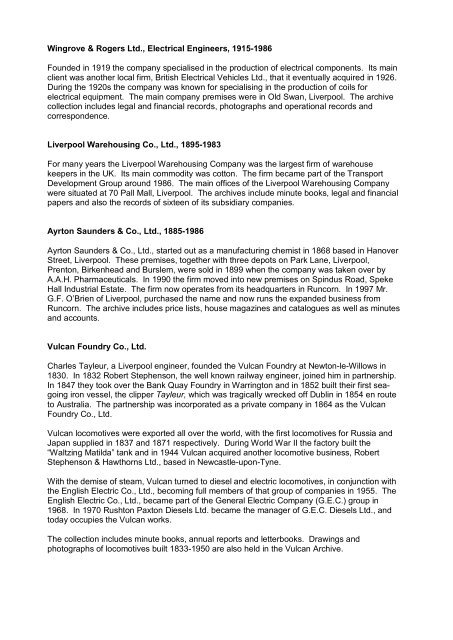
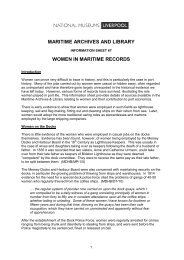
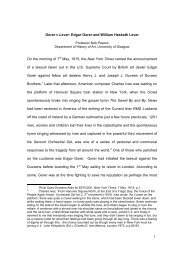
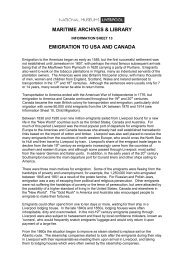
![Ancient Egypt trail [227kb .pdf] - National Museums Liverpool](https://img.yumpu.com/48998817/1/184x260/ancient-egypt-trail-227kb-pdf-national-museums-liverpool.jpg?quality=85)

